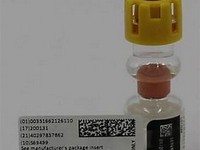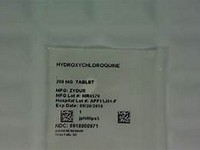ibandronic acid

ibandronic acid
CLINICAL USE
Reduction of bone damage in bone metastases in breast cancerHypercalcaemia of malignancy Post-menopausal osteoporosisDOSE IN NORMAL RENAL FUNCTION
Oral: 50 mg daily IV: 6 mg every 3–4 weeks Hypercalcaemia of malignancy: 2–4 mg as a single dose, repeated according to serum calcium levelPost-menopausal osteoporosis: 150 mg monthly (oral), 3 mg every 3 months (IV bolus)PHARMACOKINETICS
DOSE IN RENAL IMPAIRMENT
GFR (mL/MIN)
30–50 Dose as in normal renal function. See ‘Other Information’10–30 Oral: 50 mg weekly,IV infusion
: 2 mg every 3–4 weeks.IV infusion
: 2 mg every 3–4 weeks.DOSE IN PATIENTS UNDERGOING RENAL REPLACEMENT THERAPIES
IMPORTANT DRUG INTERACTIONS
Potentially hazardous interactions with other drugsADMINISTRATION
Reconstition
–Route
Oral,IV infusion
, IV bolusRate of Administration
Infusion: over 15 minutes – 2 hours (depends on indication and renal function)IV bolus: over 15–30 secondsComments
Add dose to 100–500 mL glucose 5% or sodium chloride 0.9% (depends on indication and renal function)OTHER INFORMATION
Oral bioavailability <1% Swallow tablets whole with a glass of water on an empty stomach, at least 30 minutes before breakfast and any other oral medicationThe patient should stand or sit upright for at least 60 minutes after taking tabletsDon’t give infusion over 15 minutes if creatinine clearance <50 mL/min; give in 500 mL over 1 hourBolus dose is contraindicated if GFR<30 mL/min due to lack of studiesOne study used a dose of 6 mg over 30 minutes in various degrees of renal impairment with no deterioration in renal function.1Clearance is reduced in severe renal impairmentDue to the high bone-binding effect with ibandronic acid a dose of 2 mg monthly in haemodialysis patients is equivalent to a dose of 4–5 mg in patients with normal renal function.3 May cause osteonecrosis of the jaw similar to other bisphosphonates
See how to identify renal failure stages according to GFR calculation
See how to diagnose irreversible renal disease
Home








